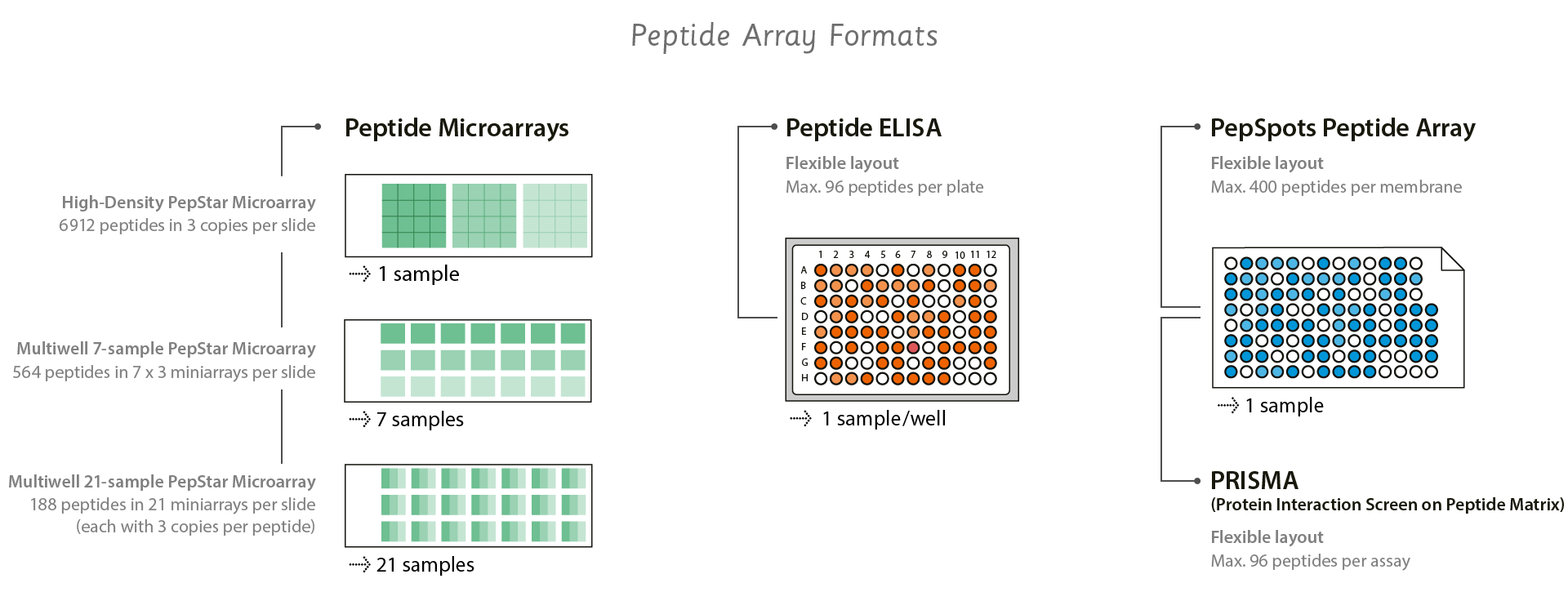The World of Peptide Arrays
Peptide Arrays display a peptide library on a solid surface, usually a glass slide or a membrane. Any form of peptide library derived from an overlapping protein scan, substitution analysis or any other library of individual peptides can be immobilized on said surface. Peptide arrays are efficient tools to study a wide range of protein-protein interactions ranging from antibody epitope mapping and functional elucidation of detected peptide epitopes to the characterization of various enzyme target families.
JPT is the market leader for peptide arrays in different applications because:
- Highest quality is warranted by ISO 9001 certified manufacturing
- JPT assures high batch-to-batch consistency
- Only JPT’s peptide microarrays contain purified peptides
- Only JPT avoids de novo epitopes by applying a proprietary capping
- Our different peptide array and microarray formats work for many different applications
- We offer the largest selection of catalog peptide microarrays in the market; continuously updated to cover recent developments (e.g. outbreaks and viral variants)
Peptide Array Applications
- Antibody epitope mapping
- Epitope-resolved humoral immune monitoring
- Functional characterization of peptide epitopes
- Biomarker discovery
- Detection & validation of protein interactions
- Enzyme substrate identification & optimization
References for Peptide Arrays

Specifications for each Peptide Array Format
Lorem Ipsum
Lorem ipsum dolor sit amet, consetetur sadipscing elitr, sed diam nonumy eirmod tempor invidunt ut labore et dolore magna aliquyam lorem ipsum dolor sit amet.
